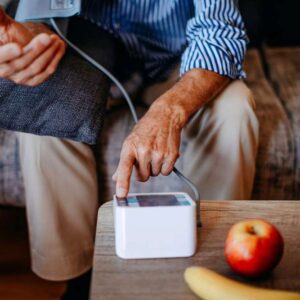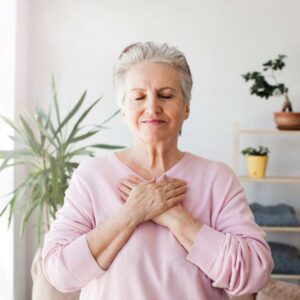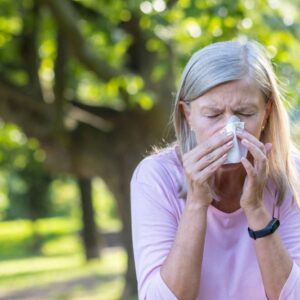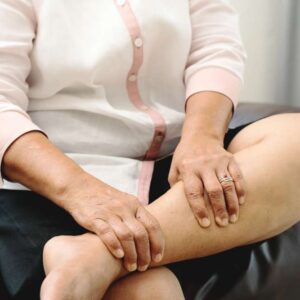
Is This Food Causing Your Joint Pain?
Are plants secretly trying to kill us?
Are all vegetables actually meant to be eaten by humans, or should some be avoided?
They are interesting questions, especially when you consider the defense mechanisms plants have. In fact, some plants produce compounds specifically to protect them from being eaten by insects and other predators.
Glycoalkaloids are one of these compounds. When a pest or predator eats a plant that produces these alkaloids, the compound binds to the cell membranes of the predator and causes its cells to burst open, killing the pest and protecting the plant.
Glycoalkaloids are found in many plants and vegetables but are concentrated in high amounts in plants from the nightshade family.
What are nightshades?
Nightshades are the common name for plants in the Solanaceae family, and include:
Tomatoes
Eggplants
Peppers, including spices from pepper like cayenne and paprika (but not black pepper — that’s a different plant)
Potatoes (but not sweet potatoes or yams)
Tobacco
Goji berries
Ashwagandha
There are poisonous nightshades as well, the most famous of which is the deadly belladonna. In fact, it wasn’t until about the 1800s that humans ventured to eat other plants in the nightshade family for fear they also were deadly.
How might nightshades cause joint pain?
The thought behind how glycoalkaloids in nightshade could present a problem in humans is that if you ingest considerable amounts of them, the alkaloids can damage the cell membranes in the intestines and lead to increased intestinal permeability, otherwise known as “leaky gut.”
The problem with “leaky gut” is that it allows bacteria and undigested proteins from food to enter the bloodstream. The immune system does not recognize these foreign proteins and bacteria, and mounts an attack against them that invokes inflammation. If the bacteria or proteins wind up accumulating in the fluid and tissues around the joints, the inflammatory response is localized and causes joint pain.
To make matters worse, some of the body’s tissues can closely resemble proteins from foods. So if the body is primed to attack a particular protein that happens to resemble joint tissue, joint inflammation can ensue.
What’s the evidence?
Researchers have found that glycoalkaloids from potatoes do indeed have harmful effects on intestinal cells — at least in mice.
In one study, mice that were fed deep-fried potato skins had increased levels of inflammatory markers and enhanced intestinal permeability. (The deep frying increased the glycoalkaloid content of the potato skins.) [1]
There haven’t been any placebo-controlled human studies that definitively shown nightshades can cause joint pain. However, there are extensive reports of folks that eliminated nightshades and experienced pain relief.
The closest thing to a human study was a survey done in the 1970s by Dr. N.F. Childers. Out of 763 people who responded to the survey, 72% responded that a nightshade-free diet had positive results for improving their joint pain. Dr. Childers did another survey in 1985, and 95% of 434 responders said a nightshade-free diet helped.[2]
Surveys like this certainly have their limitations for proving causality, but the magnitude of result is intriguing. Additionally, a simple Google search of “nightshades and joint pain” brings about countless anecdotal reports of people who have experienced improvement by eliminating nightshades.
Many alternative health practitioners advise eliminating nightshades for 30 days if you have joint pain or any other autoimmune inflammatory condition and then see if your symptoms improve. Then after 30 days, you reintroduce the foods and see if your symptoms return.
Bottom line: If you have joint pain, it might be worthwhile to try a nightshade-free diet for 30 days and see if it helps. It certainly won’t hurt to eliminate those foods for a month.
You can also reduce the glycoalkaloid content of certain nightshades by preparing them properly. Peel potatoes — most alkaloids are found in the skin. Avoid green tomatoes and sprouting potatoes — unripe or sprouting nightshades have higher alkaloid content. Ripe tomatoes contain far fewer glycoalkaloids compared with potatoes. Eggplants fall between potatoes and tomatoes.
Other ways to relieve joint pain
The cool thing about Mother Nature is that she has provided us with other plants that can help reduce joint discomfort.
Curcumin, the active component in turmeric (the bright yellow spice in curry) has strong anti-inflammatory properties that can help reduce joint pain.
Boswellia, found in the frankincense plant, has shown really great results in human studies to reduce joint pain and improve mobility.
White willow bark is the natural source of salicin and can help promote joint comfort.
Enzymes from plants are also showing great promise in promoting a healthy inflammatory response, which can help keep joints comfortable. When taken on an empty stomach, enzymes can help break down proteins such as fibrin, which can contribute to inflammation.
In fact, an enzyme from pineapple called bromelain has been shown to reduce mild knee pain in two human studies.[3] [4]
Bromelain and other helpful enzymes are the foundation of Enza-Soothe, Living Well’s joint comfort formula. We also added herbs such as white willow bark and devil’s claw to the formula, to help promote joint comfort.
We’ve gotten some really great feedback on the product. One gentleman told us: “I’ve noticed after a day on the golf course at age 57 I have far less joint discomfort.”
You can learn more about Enza-Soothe here.
Have you tried eliminating nightshades from your diet and had improvements in your joint pain? Let us know! livingwelldaily@lfb.org.
To living well,
Jasmine LeMaster
[1] Iablokov V., et al. Naturally occurring glycoalkaloids in potatoes aggravate intestinal inflammation in two mouse models of inflammatory bowel disease. Dig Dis Sci. 2010 Nov;55(11):3078-85. Epub 2010 Mar 3.
[2] Childers, N. F. et al. An Apparent Relation of Nightshades (Solanaceae) to Arthritis. Journal of Neurological and Orthopedic Medical Surgery (1993) 12:227-231
[3] Akhtar NM, et al. Clin Rheumatol. 2004 Oct;23(5):410-5. Epub 2004 Jul 24.
[4] Waler AF, et al. Bromelain reduces mild acute knee pain and improves well-being in a dose-dependent fashion in an open study of otherwise healthy adults. Phytomedicine. 2002 Dec;9(8):681-6.
View More Free Articles
The 5 Health Numbers Your Doctor Wishes You'd Track
Have you ever been told you should “advocate” for yourself when it comes to your healthcare and wondered what that really means? It’s not just a buzzword—it’s a powerful concept that empowers you to take charge of your own health journey. In fact, it could save your life. Being your own best health advocate starts...
Do THIS Every 20 Minutes to STOP Digital Eye Strain
Our eyes are under assault—they are the true victims of our current digital age. And it’s because we are constantly glued to screens… phones, tablets, computers, TVs—you name it. Unfortunately, that screen time is taking a serious toll. Digital eye strain affects millions worldwide. In fact, up to 50 percent of computer users could develop...
Mailbag: The Calcium Mistake That's Hardening Your Arteries
“What type of calcium is best to take with bisphosphonates for osteoporosis? I know some varieties can build up in arteries. Thanks for the help.” —Bone Builder Hi Builder, When a patient asks me about calcium, I ask them a peculiar question in return… “Ever wonder how elephants and giraffes build and maintain their massive...
Doctor-Approved Method to Ditch Blood Pressure Meds
In a world where drug solutions dominate healthcare, it’s refreshing to discover that best remedies sometimes don’t involve a single pill. A groundbreaking study shows simple relaxation techniques could be your secret weapon against one of America’s deadliest health conditions. Best of all? It’s free, easy to start right away—and your results are bound to...
Trouble Hearing? Your Heart Could Be at Risk
With research exploding and data pouring in, scientists are uncovering some weird (and surprisingly helpful) health connections. Today’s odd couple? Hearing loss and heart failure. Turns out your ears and your ticker are more connected than you ever imagined. A major study published in the journal Heart looked at over 164,000 people for nearly a...
Stay Up Late? It Could Destroy Your Mental Health
If you dread mornings but come alive at night, there’s concerning new research you need to know about. A recent study found that “night owls” are at higher risk for depression. But before you rush to set your alarm to get up with the sun tomorrow, there’s more to the story… Chronotypes are essentially your...
Go from Flabby to Fit with this Common Vitamin
If you’re like many of us, you woke up one day, looked in the mirror, and realized you’re no spring chicken anymore. Even worse—when you weren’t paying attention—it seems you somehow misplaced the muscles of your youth and have gone from fit to flabby. Aging has a way of humbling us like that. But scientists...
Seasonal Allergy “Off Switch” Discovered in the GUT
“Doc, why am I suddenly suffering from seasonal allergies when I’ve never had them before?” It’s a question I get all the time—and my answer might surprise you. Stop looking up at the trees—and start looking down at your gut… Your sneezing fits, itchy eyes, and runny nose might have more to do with what’s...
“Canary in the Coal Mine” Test Sniffs Out Brain Issues Early
One of the most common questions I get is how to tell if you’re starting to experience cognitive decline. I get it—losing your memory is scary, especially when it sneaks up on you. But here’s some exciting news that might put your mind at ease. A fascinating new study suggests that your nose might be...
BEAT Stubborn Leg Swelling Without Dangerous Diuretics
“I need help with edema.” —Swollen Hi Swollen, When patients complain of edema—fluid retention that causes feet, ankles, and legs to swell—I explain that, while conventional medicine immediately prescribes diuretic drugs, nature offers us effective solutions we can try first. I’ll share those in just a moment, but first, let’s take a quick look at...









